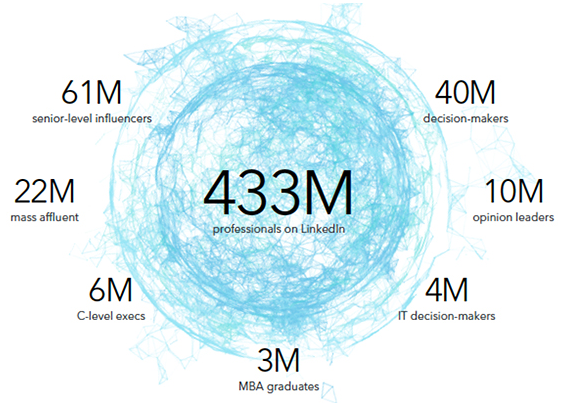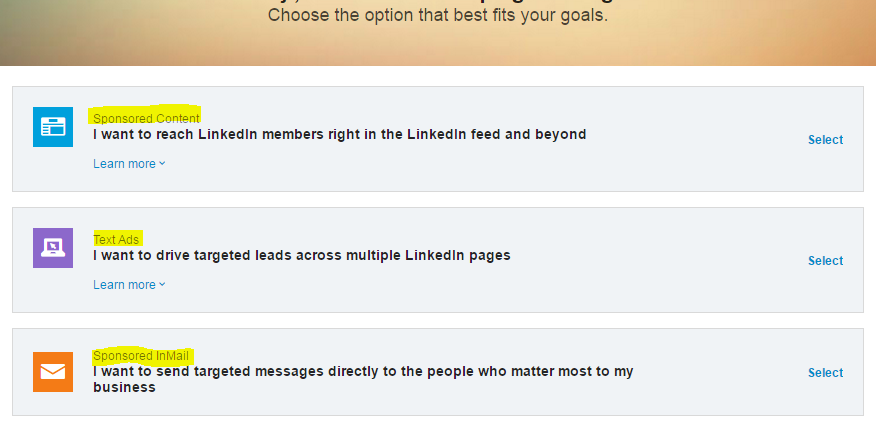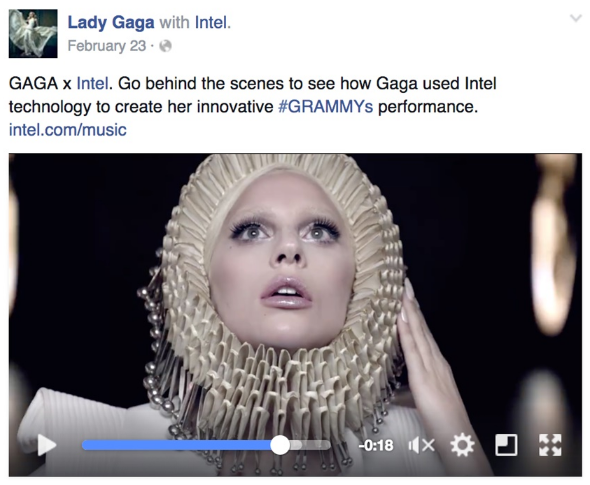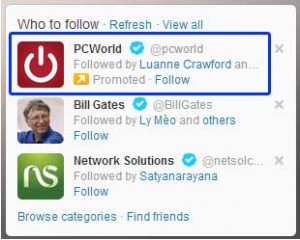In 2016, the primary digital marketing activity for 66% of B2B marketers in India was found to be social media marketing. Brand awareness, driving engagement and increase in traffic were found to be the top three social media marketing benefits; LinkedIn, Twitter and Facebook the top 3 social media channels to reach customers.
On the face of it, all social media channels look similar, but are they? Do they have similar audiences? Are they used by Marketers and Audiences in the same way? As a B2B marketer in India, what are the subtle differences and how would you utilize each channel? In this blog, we have attempted to describe the features of each channel with its free and advertising options to understand these channels better.
To begin with, here are some statistics of social media users worldwide and in India. Facebook has the largest reach, whereas LinkedIn has more targeted users. Each channel offers its own benefits.
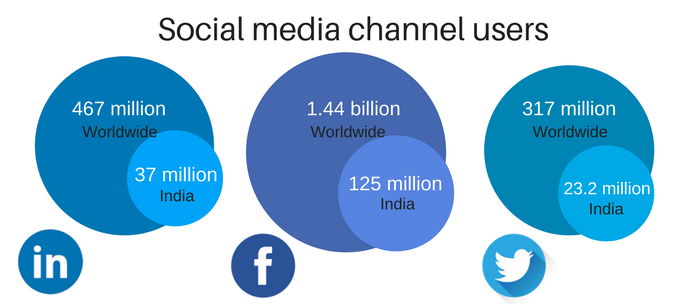
What are B2B businesses gaining on social platforms? Social platforms are effectively used for brand awareness and lead generation by B2B businesses. In India, Facebook provides the best ROI to B2B marketers over other social channels. (Octane) While Facebook tops in ROI, LinkedIn tops in lead generation. A study shows that LinkedIn is 277% better for lead generation than Facebook and Twitter for B2B businesses.
LinkedIn, Facebook and Twitter – Free-use benefits
You can achieve some benefits on these three channels without advertising – they enable you to create a presence on social media. A business can create a page, invite followers to like their page, and reach their audiences. By sharing relevant and useful content on these platforms, marketers can drive traffic to their websites. As people search more on these channels instead of on Google, it has become a necessity to have a presence on social media.
- Create a business page and invite followers
- Distribute content to followers – post text, blogs, videos, images
- Create groups and special interest pages to engage your audience
- Build community
- Drive traffic to your website
- SEO benefits
- Build brand
Features and Advertising options
LinkedIn is used only by working professionals thus making it the most effective place for B2B marketers to engage with decision makers, influencers and leaders of today and tomorrow.
B2B lead generation companies consider LinkedIn as an effective social media tool because:
- It drives 80% of B2B social media leads.
- 79 percent of B2B marketers view LinkedIn as an effective source for generating B2B leads.
- LinkedIn is found to be the most preferred social network by CEOs.
Features of LinkedIn
- Companies can create profile pages and post regularly about their brand, product, news, ideas and so on.
- Empowers executives and companies to build their brands and establish thought leadership
- Sharing case studies, whitepapers, and webinar offers on LinkedIn is welcome
- LinkedIn users segment themselves by industry which allows marketers to target even a niche market.
- Provides almost everything about a target prospect’s professional history
- LinkedIn groups can be used effectively to participate and build engagement.
- Offers great potential to nurture leads from initial post to final sale
- It can be used to effectively identify job candidates
- Advertising can be extremely targeted by location, industry, title, company and other demographics
- LinkedIn gives the opportunity to easily target brand advocates, industry influencers and prospects
- Offers automated direct messaging option, which can be used to send sales-oriented content
Limitations of LinkedIn
- As LinkedIn has a discerning audience, it takes time to actually gain trust and establish thought leadership
- LinkedIn is fundamentally a closed network, i.e. one can interact only with users who have given permission to do so.
- It demands a large time commitment from marketers
- Groups can include spam
Advertising on LinkedIn:
LinkedIn has 4 types of advertising and very good options for targeting your audience. LinkedIn targeting characteristics include: Job Title, Job Function, Seniority, Company Name, Industry, Gender / Age, Company Size, Geography, Group, Skill and Degree. Conversion tracking helps to track the number of leads from ads.
LinkedIn has the following advertising options:
Self-service ads
Self-service ads give the option to choose from among sponsoring content (boost), sponsored InMail, and text ads.
Types of self-service ads
Sponsored InMail:
Sponsored InMail helps in engaging your target audience with personalized content using the messenger experience on LinkedIn. It can be used to boost conversions, increase brand awareness using product promotions, to send personalized invites to webinars or events, and for relevant content downloads.
Sponsored Content:
With sponsored content or native ads in LinkedIn, you can capture the attention of highly engaged people and drive qualified traffic.
Text ads:
Text Ads are LinkedIn’s easy, self-service pay per click (PPC) advertising platform. LinkedIn Text ads give the option to fine tune targeting options to reach just the right people and drive high-quality leads. Set the budget and pay for only the ads that work – per click or per impression.
LinkedIn ads have proved to work for B2B businesses – read the case studies here.
Though Facebook is used predominantly for B2C, it has a significant role in B2B as well. It is the largest and most active social network in existence and no other platform offers the same reach in almost every demographic. 43% of B2B marketers using Facebook to market their business, have been successful in acquiring new customers.
- Facebook is the largest social network
- Companies can create a page, gain followers and post useful and interesting content
- By posting useful and engaging content like blogs can be used to drive traffic to the website
- Facebook serves goals like brand awareness, storytelling, customer loyalty/retention, customer service and paid advertising
- Easy place for a business to get started – enables creating a page in minutes
- It’s perfect for mobile, easy to use
- Its ads are prominent enough for a lot of people to click
- It even rewards you for testing more ads and targets
- It has the lowest cost per click.
A B2B focused survey has found that Facebook increases exposure and traffic.
Limitations of Facebook
- B2B will find it hard to target B2B customers or know the professional background.
- It is a pay-only advertising network (pay more to reach more) not pay per click
- Lead ads not integrated with email marketing tools
Advertising on Facebook
Prominent ad placements, flexible budgeting and lowest cost-per-click rate are few features which makes it attractive. It even rewards the advertiser for high performance.
Targeting can be done based on factors such as interests, age, gender and location. Advertisers have the option to show adverts to people who have recently viewed pages or specific products on a website.
There are different types of ads based on the marketers’ goal and purpose.
Domain Ads
If you do not have a Facebook page for your business or do not want your message to show on your Page or in News Feed, Domain ads can be used to take a visitor to your website or any other website. (these ads are displayed on the right side of the newsfeed).
- Mostly used for direct-response campaigns
- Conversion takes place outside of Facebook
Multi-Product Ads (Carousel Ads)
Allows the advertiser to show multiple images, links and videos at once and can help in decreasing cost per conversion and cost per click. It also enables sending people to different pages on the advertiser’s site.
Offer Ads
It help advertise discounts and promotions to its market.
Video Ads
Facebook has options to use videos on product launches or customer stories to raise brand awareness.
Lead Ads
Lead Ads are the best way for running lead generation campaigns on Facebook. B2B audiences can be targeted with specific content. Leads from Facebook lead ads can be downloaded as a CSV file and integrated with a CRM. The tool collects phone numbers, emails, names and more information. It’s possible to send automate email responses as well.
Canvas
These ads are designed exclusively for mobile newsfeed
- Built using a combination of videos, still images and call-to-action buttons.
- Enables swiping through a carousel of images, tilt to view panoramic images and zoom in to view images in detail.
Sponsored Mentions or branded content
This ad can be used only in the newsfeed. It is designed to be used along with the name of a celebrity or an influencer. Only verified Pages and Profiles (with the blue checkmark) can share branded content on Facebook.
Dynamic Ads
Based on the visitor’s behavior, different ads can be served to different groups of people based on their interests. These can be single or multi-product ads.
Instagram:
Since Facebook is linked with Instagram, Facebook targets user accounts in both the platforms and ensures that the ads reach the correct audience in both.
Facebook shows the estimated daily reach on Facebook and Instagram when you plan your advertising.
Here are some examples of B2B facebook ads.
Here are few examples demonstrating Facebook as a viable channel for B2B lead generation. (Source)
- A marketing agency generated new client leads for $29.26 apiece.
- A SaaS company used a whitepaper to generate 504 leads and 92 new demo signups for $26 per demo signup.
- A cloud hosting company got new business leads from Facebook advertising and a whitepaper for $59 each.
Twitter has transformed the way that marketers communicate with their target audiences by providing another place to engage, address questions, and emphasize what they stand for. It helps to start a conversation with influencers and industry experts or potential customers and increase brand awareness.
In fact, Twitter is now the top social platform for B2B brand mentions, with 73% of them happening on the site. By using proven Twitter strategies your business can benefit from a platform that too many B2B marketers overlook.
Features:
- Allows you to create your business page and post 140 character tweets with links to your content
- Growing communication platform, especially among 18-29 demographic
- You can target your messages for a variety of segments on a variety of topics by using appropriate hashtags
- Offers opportunities to share your message and engage with users in new and exciting ways
- High engagement, perfect for B2B-style conversation that leads to conversion
- Helpful to drive brand awareness.
- Your content can be found by searching at anytime
- Character limit encourages you to be concise and to the point
- Advertising allows you to increase your reach. Twitter ads are interactive.
Limitations of Twitter:
- Twitter traffic often comes with low purchase intention
- Does not allow messaging directly
- Chances of going unnoticed are high as followers may get many tweets in their news feed.
- Shortened URLs don’t speak the content in one line as the full URLs do
Survey results that show how Twitter is useful for business:
- 72% of followers are more likely to buy something from a business they follow.
- 86% of followers are more likely to visit a business if a friend recommends it.
- 85% of followers feel more connected with businesses after following them.
Twitter has a variety of advertising options and campaign options. Audience targeting in Twitter is based on language, gender, interest, followers, device, behavior, keyword, geography and tailored audience targeting.
Advertising on Twitter
Businesses can promote a brand on Twitter using these 3 types of Twitter ads:
Promoted Accounts
Promoted Accounts are shown directly to potential followers, in ‘Who to Follow’ suggestions and search results.
Promoted Trends
This allows promoting a hashtag. Hashtag will appear at top of trending topics list that appears on the left side of the page, on the Discover tab, and on the Twitter app.
Promoted Tweets
These are regular Tweets that an advertiser can pay to display to people not following them on Twitter. It will appear directly in targeted users’ timelines, at the top of search results, and in the Twitter mobile app.
Twitter Campaigns
Ad campaigns are categorized based on campaign objective and payment options differ for each campaign type.
Tweet engagements
Promote Tweets to increase brand awareness and pay only for the initial engagement with each user. No payment for impressions of Promoted Tweet that do not result in engagement.
Followers
Promote Twitter account and payment is based on number of followers gained. No payment for Impressions and engagement.
Awareness
Promote Tweets to a broad audience and pay for impressions (CPM). This is the only type of campaign where the pricing is based on impressions and not engagements.
Video views
Promote videos to a targeted audience and pay per video view. This campaign aims to increase the number of video views. Payment is made when a user sees two seconds of playback in the timeline, clicks to watch in fullscreen, or unmutes the video.
Website clicks or conversions
Payment is per click in both types of campaigns, but a conversions campaign has additional functionality to track conversions. It includes a Website Card, that includes a preview of the website in the Tweet.
App installs or re-engagements
Promote tweets to users for downloading the app, and to users who have already downloaded but have not used it for a while. Pay per app install or for both app installs and app opens.
Show preview image of app in the App Card with the app’s ratings in the tweet and give the option to open or install the app with one click.
Here is a summary of the three channels:
Channels | ||||
|---|---|---|---|---|
LinkedIn – a Business-oriented professional network | Facebook – a Social network | Twitter – an Online news and social network | ||
Audience and Use | ||||
Much smaller, gives best leads for B2B. | Has the largest audience, good to build engagement. Best for B2C, but has produced significant results for B2B as well | The smallest user base, good for brand awareness and starting conversations with influencers and decision makers | ||
Targeting options | ||||
Location, Company Name, Industry, company size, Job Title, Job Function, Job Seniority, skills ,Schools, degrees, Fields of Study, groups, Gender, Age, years of experience. | Audience targeting options are Age, Gender, Interest and location and more. However, industry data may not be available for many users on Facebook | Targeting can be based on variety of features such as language, gender, interest, followers, device, behavior, keyword and geography. Also enables tailored audience targeting. | ||
Advertising options | ||||
Sponsored InMail, Sponsored content and Text ads. | Desktop news feed, Mobile news feed, Right column ads, Carousel ads, Canvas ads and Sponsored Mentions | Promoted tweets, Accounts and Trends and 6 different types of Campaigns. | ||
Cost of advertising / ROI | ||||
Advertising is most expensive, CPM and Pay-per-click rates are the highest. | Advertising is less expensive. CPM rates are lowest the lowest. | Twitter ads cost and ROI depends on bid amount and type of bidding. | ||
Community engagement | ||||
A user can create a discussion group or ask to join one. Participation can bring rewards. | Groups and pages on various topics can be created to build community | Twitter does not have the ‘group’ feature, but Lists can be created or you can subscribe to a list. | ||
Conclusion
In conclusion, each social channel would be employed based on your goals, budget and where your target audience is to be found. In this article, we have shown that while the channels have similarity, they also have subtle differences. The interaction, audiences, and how you engage these audiences is different for each as are the advertising options available.
Branding, engagement and leads can be generated without advertising, but to increase reach and get new audiences to generate more leads, it becomes necessary to advertise. Understand suitability and harness the power of each platform to increase your ROI.
References
http://marketprobeint.com/index.php/press-twitter/
http://www.thedrum.com/news/2016/01/05/facebook-continues-prove-successful-platform-b2b-marketers-survey-finds
https://www.facebook.com/business/help/1462876307360828
http://www.hubspot.com/marketing-statistics
http://www.webershandwick.com/uploads/news/files/socializing-your-ceo-iii-exec-summary.pdf
https://business.linkedin.com/marketing-solutions/blog/linkedin-b2b-marketing/2016/why-b2b-marketers-net-undeniable-results-on-linkedin
LinkedIn for B2B Lead Generation

